When Pet Obesity Becomes a Health Concern
How can you tell if your cat or dog needs to trim down?

How can you tell if your cat or dog needs to trim down?

If you’re anything like us, you’ve put on a few pounds during the pandemic.
And we’re not the only ones—Lemonade’s favorite vet, Dr. Stephanie Liff, estimates that up to 90% of dogs and cats have gained weight since the spring of 2020! Looks like our pets have their own version of the “quarantine fifteen”…
Indeed, even pre-pandemic, the Association for Pet Obesity Prevention estimated that 54% of grown-up dogs and 59% of cats are “obese or overweight.” In addition, according to a OnePoint survey conducted for Lemonade, 50% of pet parents have put their pet on a diet at some point to prevent or manage obesity.
But when does a little extra padding for your pet become a medical issue? And how you can handle pet obesity without overreacting?
You probably can’t help but slip a therapeutic snack to your four-legged bestie during these stressful days. Whether you’re sharing your fav nighttime snack or putting an extra scoop of food in your pet’s bowl, overfeeding your fur fam can be tempting. We get it. Nothing gives pet parents any more happiness than seeing their furry friend jump for joy when treats are out.
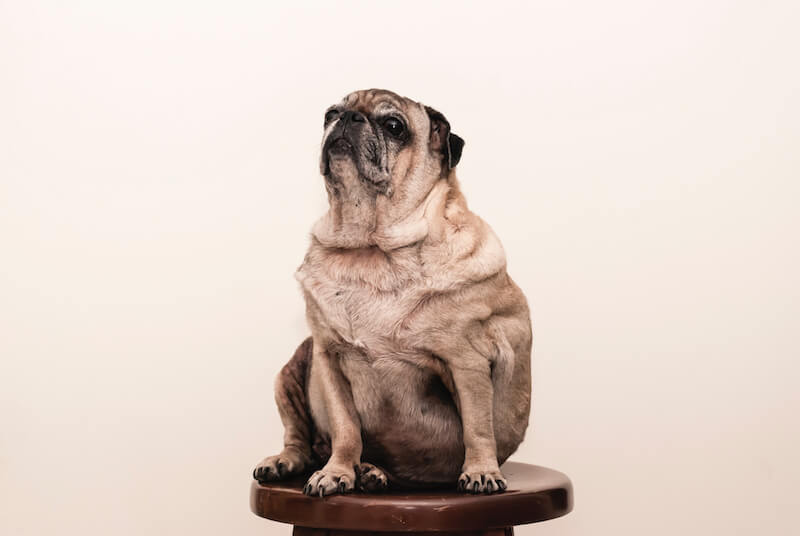
But pet obesity is a serious issue, and one that can lead to everything from high blood pressure to diabetes. Thankfully, we’re here to help. Dr. Liff gave us some advice on how to keep your pet healthy—and when to be concerned about your pet’s weight gain.
In general, pet obesity is caused by too much food and not enough exercise. However, pets can also gain extra weight from illnesses like hypothyroidism or orthopedic injuries that prevent them from running around.
We’ve all eaten too many fries or sat on the couch all weekend binging a new Netflix show. When this behavior turns into a habit, we may have a weight management problem.
Same goes for your four-legged friend. A couple bites of peanut butter won’t hurt. Just make sure your pet stays active and isn’t getting a whole extra scoop of food everyday.
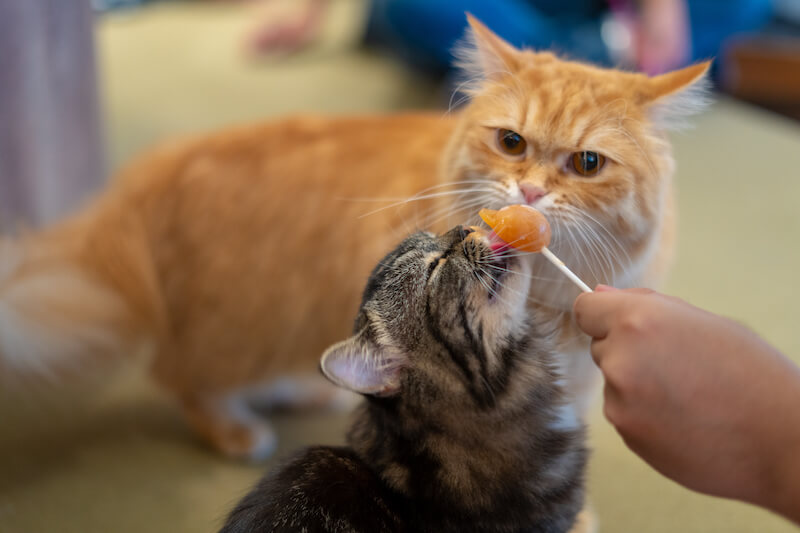
For cats, obesity isn’t generally the result of whether they’re getting enough exercise or not—an extra bowl of kibble can do more damage than being a couch potato. Low quality dry cat food is more likely to cause obesity, so we suggest wet or high quality cat food.
If your cat has an indoor/outdoor life, you might think all that running around would keep them trim… but there’s also the chance that they’re being overfed at home, and eating additional grub as they cruise the streets.
As a dog owner, physical activity certainly does impact your fur fam. If you take walks and hikes with your pet, you’ll both be healthier.
Dogs are not always to blame for the excessive weight. There are common diseases that might be at fault: hypothyroidism; Cushing’s disease; orthopedic illness that prevents exercise; or neurologic dysfunction that either causes increased appetite or decreased ability to exercise. Talk to your vet if you’re facing any of these issues.
We’re not going to lie to you—pet obesity can cause some serious problems… but it’s better to know what a seemingly innocent, extra amount of food could do to your furry friend.
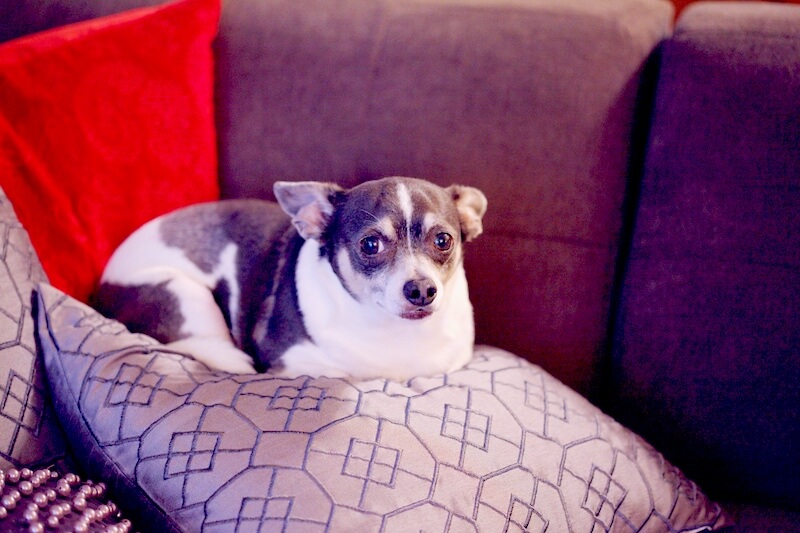
Canine obesity can lead to a shorter lifespan, high blood pressure, diabetes, and mobility issues. Weight issues could lead to a nasty injury that might prevent your dog from exercising, causing a vicious cycle that’s difficult to break.
Feline obesity is no joke either. Your cat could experience a range of health problems from diabetes mellitus and osteoarthritis to respiratory disease and skin disease. And if you’re thinking of getting pet health insurance for your dog, any of these obesity-caused issues would be considered pre-existing conditions.
But luckily, pet obesity is preventable and many of these quality of life issues are only seen in extreme cases.
Chubby dogs can be pretty darn cute, but it’s often hard to tell if those extra pounds are leading to health issues that aren’t so adorable. You might have been conditioned to think some breeds naturally have bigger bellies.
Sometimes, perceptions like this can mislead pet owners to believe their furry friend is heavy on body fat, but still at their ideal weight. So is your pet just chubby, and not overweight or obese?
The easiest way to monitor your pet’s weight is with the rib test. You don’t need a doctor consultation or a medical degree—all you need is your hand.
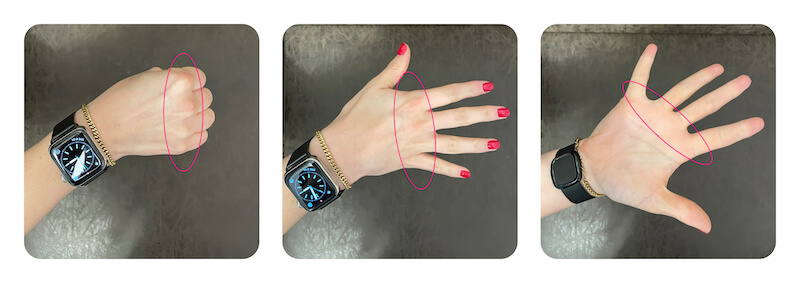
Start by closing your fist and feeling your knuckles. If your pet’s ribs feel the same when you touch their side, your pet is underweight. You should contact your vet for advice on how to help your pet gain some weight.
Now, open your hand and feel your knuckles again. You should be able to feel your knuckles, but not as much as when your hand was in a fist. If your pet’s ribs feel like this, they are most likely in a healthy range. Keep up the good work, guys!
To check if your pet is obese, flip your hand over and touch the squishy part right before your fingers. If you rub your hand over your pet’s ribs and it feels similar to that fleshy part of your palm, it means your cat or dog might need to lose some weight.
A basic rule to follow: You should be able to feel your pet’s ribs, but not see them.
If you have any suspicions after doing this simple at-home test, take your pet to the vet to ensure they’re at a healthy weight.
Your cat or dog’s doc can assign them a body condition score, often ranked from 1 to 5: extremely underweight to obese. You should shoot for 3, the healthiest body condition. Here’s a useful diagram for dogs and cats to help you understand what that might actually look like.
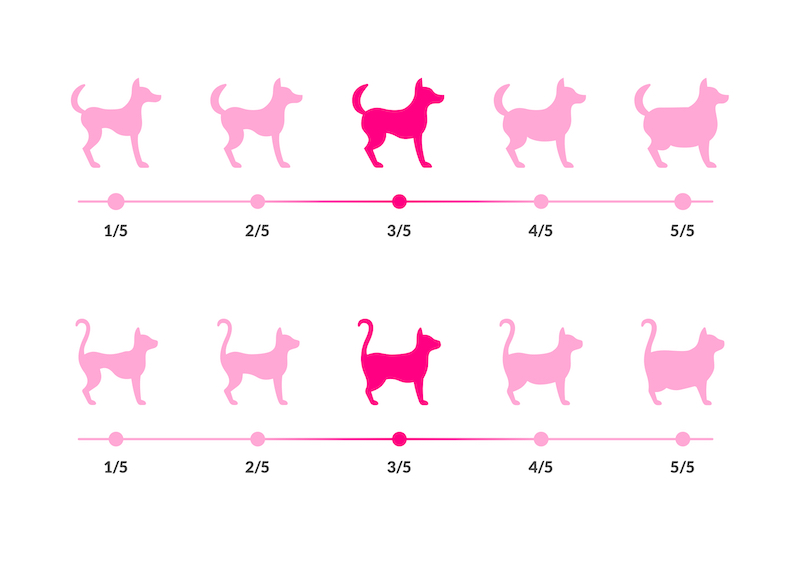
Maybe you’ve already switched from dry to wet pet food. But you haven’t seen a difference in body weight. If so, here are some things to consider, depending on whether your furry friend is a dog or a cat.
Dr. Liff suggests weight loss for dogs is essentially about two factors: lowering calorie intake and increasing exercise. (We know, that’s easier said than done when it comes to us humans.)
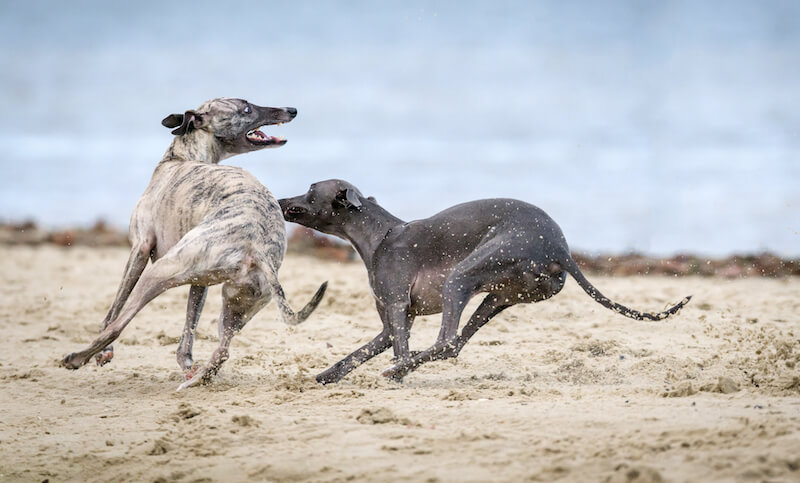
By reducing your dogs daily calorie intake by at least 25% and going on more trips to the doggy park—or the beach, or that hiking trail in the woods—you should start seeing results. Start by checking in with your veterinarian to make sure that lowering calories is the best option.
Dr. Liff advocates for two 30-60 minute walks per day, depending on your dog’s breed, age, and current activity level. Dogs need to take it slow too, so feel free to take shorter walks in the beginning if your pet hasn’t been exercising much recently.
If you’re struggling to fit walks into your busy schedule, don’t be afraid to get creative. Bring your four-legged friend to the store, let your kids play with her in the yard, or go on a quick morning jog. This can be tough—especially when winter weather hits—but you and your dog will both benefit in the end.
Of course, your days might be full already, between working-from-home with kids, doing household chores, and dealing with the stress and anxiety of our modern world. Luckily, there’s a plethora of dog walking and doggy daycare services available, from Rover to Wag and Barkly Pets.
Schedule a visit with your vet if your dog isn’t losing weight 1-2 months after taking these steps.
Losing excess weight for cats can be a bit trickier. An easy way to start is by feeding them wet food as a meal, at a set time, rather than leaving dry food out all day (so-called ‘free feeding’).
Overweight cats don’t do well with drastic calorie-cutting. So, if you continue to have concerns, check with your vet to see how you can safely limit your cat’s food intake. It’s also best practice to check in before changing your cats diet. If your cat doesn’t like the new brand of food, they might avoid eating, which can lead to a liver disease called hepatic liposis.
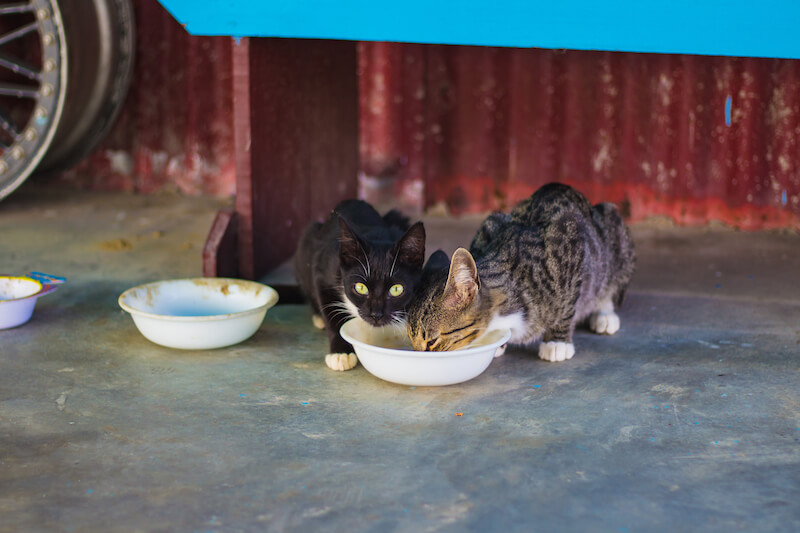
If you’re a cat parent, you should know that lack of exercise isn’t usually the reason your furry friend is gaining weight. Overeating is the most common cause of feline obesity. To prevent them from eating all day, leave your cat’s food out for only a few hours each day. If you have more than one cat in your fur fam, keep extra watch because one might be eating both meals.
Finding the right balance of food and play can be different for every fur fam. To be completely honest, a few treats here and there are greatly appreciated and more than acceptable—all of us deserve a therapy snack sometimes.
Just make sure you monitor your furry friend’s waistline and belly. If you’re worried, Dr. Liff recommends taking your pet to the vet every 6 to 12 months to ensure they’re healthy. And hey, if you haven’t done so already—consider getting your feline or canine pal hooked up with Lemonade’s pet health insurance.
Please note: Lemonade articles and other editorial content are meant for educational purposes only, and should not be relied upon instead of professional legal, insurance or financial advice. The content of these educational articles does not alter the terms, conditions, exclusions, or limitations of policies issued by Lemonade, which differ according to your state of residence. While we regularly review previously published content to ensure it is accurate and up-to-date, there may be instances in which legal conditions or policy details have changed since publication. Any hypothetical examples used in Lemonade editorial content are purely expositional. Hypothetical examples do not alter or bind Lemonade to any application of your insurance policy to the particular facts and circumstances of any actual claim.